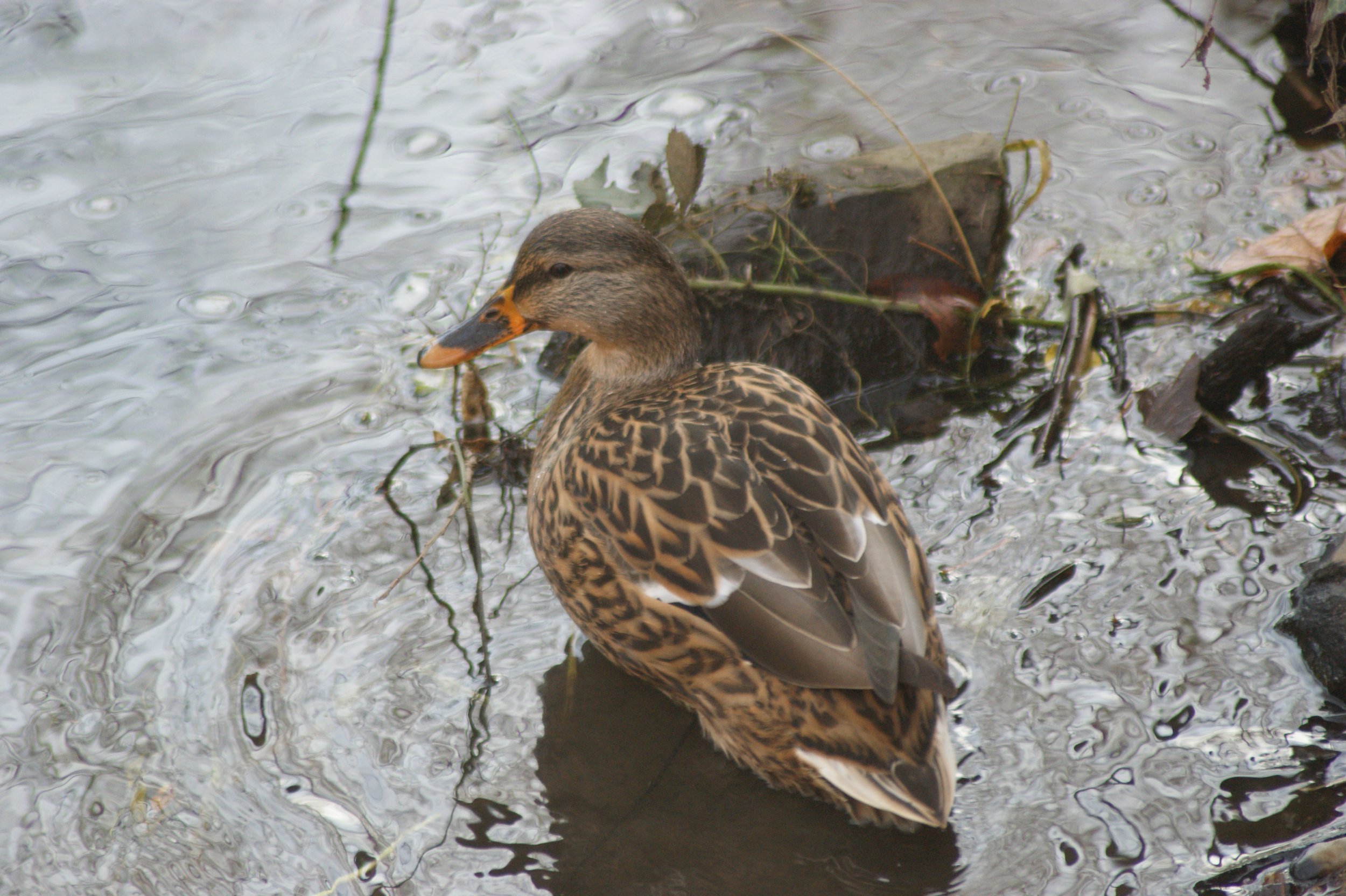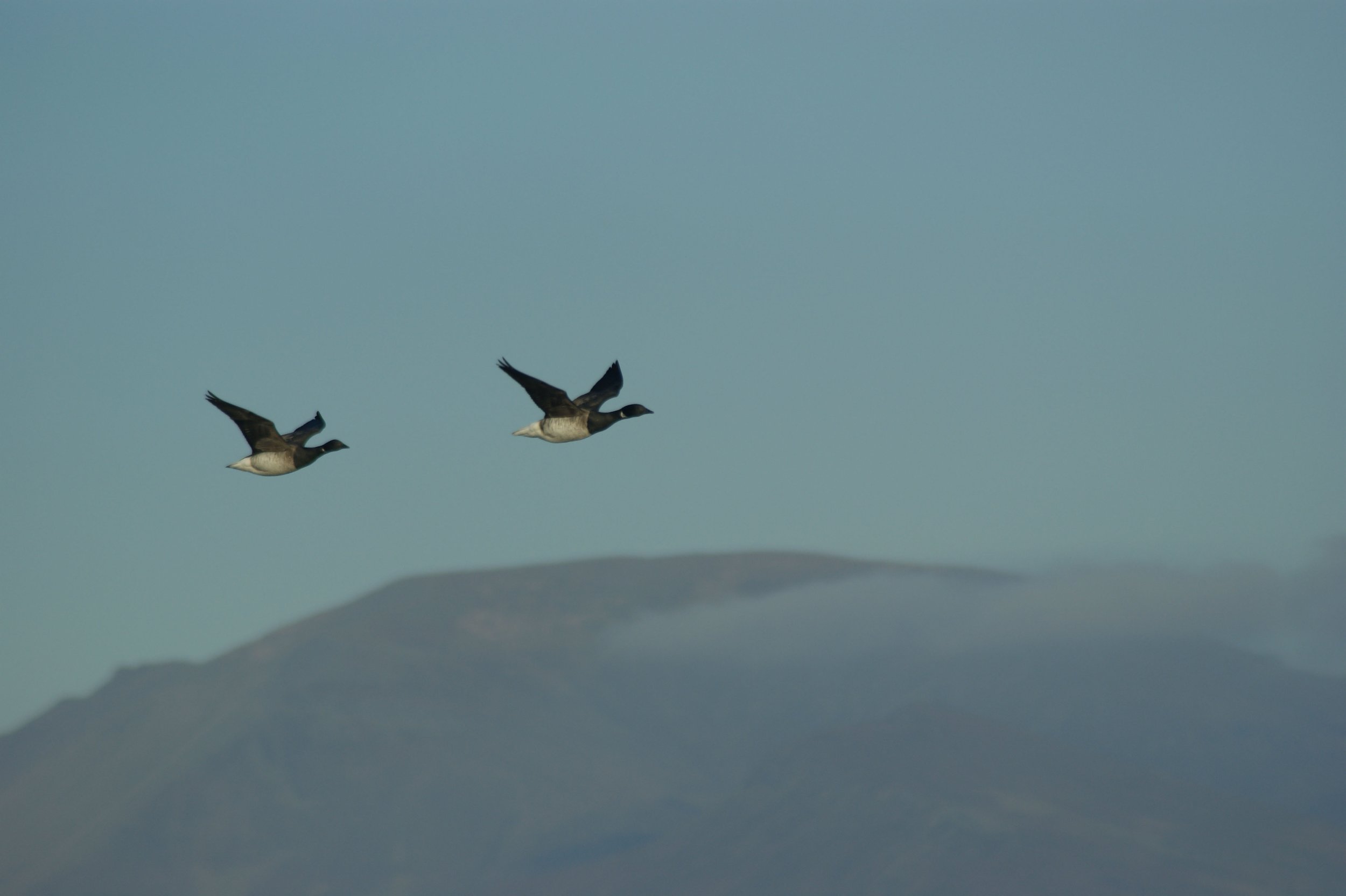Wetland Birds
Curlew / Curlúin / Crotach
What?
As the name indicates, wetland birds are associated with water bodies. These include beaches and estuaries, coastal grass and farmlands, lakes, rivers and boggy uplands. The best time to watch wetland birds along the coastline is 2-3 hours either side of high tide, as the birds will be closest to you. At low tide the birds may be too spread out and far away and they will be hiding in their roosts during very high tide which makes them hard to spot. There is a strong temptation to venture out onto the mudflats to get a closer view of the birds but it is always important to remember not to disturb them. Any time that they spent avoiding dogs or humans can take from the time they have available to feed or can use up the energy that they are trying to conserve by resting.
Who?
Distinguished by long legs and long beaks, the easiest wader to identify is probably the Oystercatcher (Roilleach) with its distinct black and white plumage and bright orange beak. They also have a very distinct call, which makes them one of the species that you might hear before you see them. The Curlew (Crotach / Curlúin), with its long, downcurved beak and brown plumage can easily be mistaken for the smaller Whimbrel (Crotach eanaigh). But again, the curlew’s distinctive call would give you the clue to find out which bird it is you are looking at. Smaller waders found along beaches are the swift-footed sanderlings (Luathrán), all-year-rounders Ringed Plover (Feadóg an fhainne) and seaweed-flipping Turnstones (Piardálaí trá). Other non-waders include ducks and geese. There are three black-headed species of geese but you are most likely to encounter Brent geese (Gé dhubh)on Iveragh. Ducks often arrive in large numbers. These include the all-year-rounder Mallard, but also the smaller Wigeon and even smaller Teal, both of which are mainly winter visitors. Some duck species are similar to seabirds, staying at sea except during the breeding season. These include the beautiful Common Scoter (Scótar) or the rarely seen Eider. To help you figure out what you are looking at, have a look at the LIVE project’s introduction to wetland birds.
When?
Many of our wetland birds visit Iveragh during the winter. They travel from their summer breeding grounds of Northern Europe, Scandinavia, Iceland, Greenland and Canada when those areas grow cold. Ireland, and Iveragh, are located in what’s known as the East Atlantic Flyway – a highway for migrating birds. Our mild winters and ice-free wetlands allow these birds to forage and fatten up for their migration back to their breeding grounds in spring. Others, such as ringed plover, turnstones and oystercatcher, remain here on Iveragh to breed. Their numbers grow over the winter through additional backup from migratory visitors. However, many of our summer breeding waders are actually in decline due to changes in land usage.
Webinar on Iveragh’s Shorebirds
Whooper Swan / Eala ghlórach
Mute Swan / Eala bhalbh
Turnstone / Piardálaí trá
Sanderling / Luathrán / Laidhrín geal
Teal / Praslacha
Oystercatcher / Roilleach
Male Mallard / Lacha fhiáin fireann
Female Mallard / Lacha fiáin baineann
Cormorant / Broigheall
Brent Geese / Gé ghiúrainn











